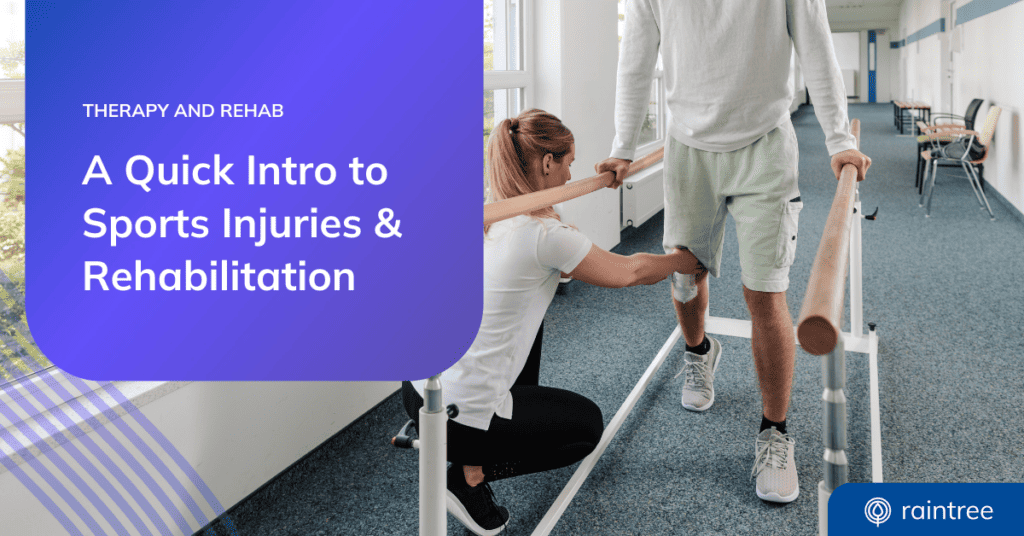Sports are a fun way of staying healthy and fit… as long as you don’t get injured! Yet sports injuries are not uncommon, especially if you are out of shape, not wearing protective gear, or simply playing sports with a higher risk for injury.
Common Types of Sports Injuries
Although they may occur in any part of the body, sports injuries primarily affect the ankle, elbow, knee, head, shoulder, and the Achilles tendon, a thick cord of fibrous tissue connecting the heel to the calf. While the reason for injury may vary, overusing, overextending, or even taking a blow to joints and vital body parts can be a common part of high-octane sports.
- Broken bones, also known as fractures, are common sports injuries and can range from troublesome to severe. Physical therapy often plays a massive role in recovery.
- Dislocations are also prevalent, whereby the bone moves out of its normal position at the joint. A common example of this is when the upper arm bone is pulled or pushed out of the shoulder socket.
- Sometimes a ligament stretches too much or tears, resulting in a sprain. Sprains primarily affect the ankle, knee joint, and wrist.
- What’s more, many athletes can also suffer from a strain, which is a soft tissue injury that occurs when a muscle overextends and stretches or tears. Some common muscle strains include back strain, abdominal strain, and hamstring strain.
Other common injuries include:
- Cartilage tear: When the shock absorber that protects and cushions bones ends up tearing
- Concussion: Brain injury caused by impact to the head
- Tendinitis: Overuse injuries where tendons (the tissues connecting muscles to bones) become swollen and inflamed. The most popular types are tennis elbow (lateral epicondylitis) or jumper’s knee (patellar tendonitis).
These sports injuries may manifest as aches, pain, tenderness, visible bruising, deformity, decreased range of motion, stiffness, weakness, swelling, etc. At the first sign of these symptoms, athletes should seek help from a medical professional.
Common Treatment Types for Sports Injuries
Doctors and athletic trainers often recommend the RICE method as the first treatment for minor injuries. RICE simply means rest, ice, compression, and elevation. Resting allows the body time to heal itself, while the other steps have the following advantages:
- Ice. Applying ice reduces swelling and pain.
- Compression. Wrapping the injured area prevents swelling, but not too tight as too much pressure may interrupt blood flow.
- Elevation. Raising the injured part above the heart’s level reduces throbbing, pain, and swelling.
Most sports injuries are mild and may go away without extensive medical attention, but it is often good to see a health specialist anyway. Whereas, more significant injuries may require a more intensive treatment plan to help with recovery.
Physical Therapy
A physical therapist can help athletes set and work on recovery goals by coaching as well as offering encouragement throughout the healing journey. They can also teach techniques for staying active, focused, and positive. Other than finding safe physical activities or ways of staying involved with sports during recovery, some additional areas of focus with a physical therapist may include balance, strength, and mobility.
According to ChoosePT, sadness, anger, frustration, and lack of motivation can affect recovery. Fortunately, physical therapists understand how physical and mental wellness work together, so that they can help address emotional responses in addition to physical recovery.
Sports Medicine
These types of providers have special training in helping active people prevent injury and illness. They work with professional athletes as well as active adults, kids, and teens. Although sports medicine is not technically a medical specialty, those who practice it have extensive knowledge of restoring function to injured patients and supporting them to get back in action as soon as possible – some also have orthopedic surgical training!
For children participating in sports, it’s imperative that the parent or guardian notes any signs of stress fractures, ankle sprains, knee and shoulder injury, cartilage injuries, tendonitis, exercise-induced asthma, a concussion, or other sports-related injuries.
Surgery
Sometimes surgery is needed to repair adversely affected cartilage and ligaments, align bones, or reposition a joint. Typically saved as a last resort, surgery for sports-related injuries is designed with restoring an athlete’s functionality in mind. With the combined efforts of an orthopedic surgeon and a physical therapist, it’s possible for patients to make a full recovery and return to the game as soon as possible.
Injury Prevention
While being active is undeniably beneficial to one’s physical health, everyone needs to take smart steps. Plus, being cautious reduces the risk of injury and lets athletes have stress-free fun! From wearing proper protective equipment to proactively stretching and hydrating before intensive exercise to simply recognizing body limitations and knowing when to stop pushing, there is a myriad of ways to prevent injury while participating in sports.
Improve Treatment Outcomes with the Best Physical Therapy EMR
Therapy and rehabilitation plays a vital role in helping patients recover after a sports injury—in fact, many providers tend to maintain active lifestyles themselves! Take a look at some of Raintree’s clients in action:
Our all-in-one platform is built for any type of therapy and rehab practice. Whether it be through powerful automation or flexible functionality, Raintree helps you grow past any problem, no matter the pain point as well as promotes healing and well-being for those affected by sports injuries.

